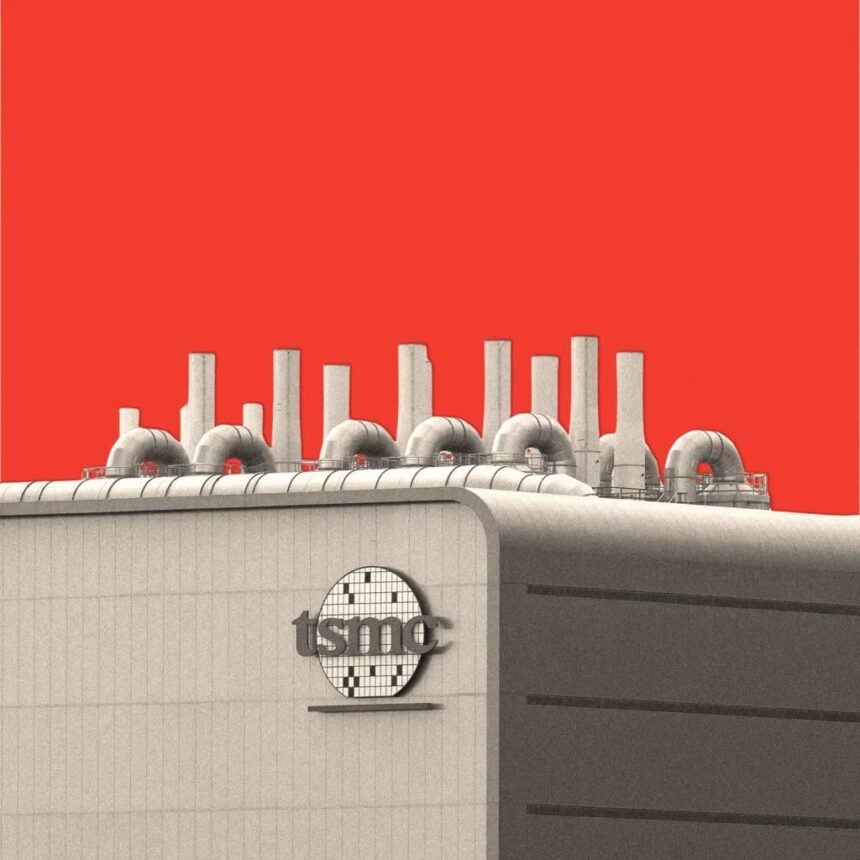The US Factory Exposing Trump’s Policy Contradictions
Tucked away in the Arizona desert near Phoenix, a significant construction project is underway that promises to impact both the US economy and the global semiconductor landscape. This facility is spearheaded by Taiwan Semiconductor Manufacturing Company (TSMC), renowned for producing 90% of the world’s advanced semiconductors. This massive center, dubbed “Fab 21,” is set to manufacture the most complex chips ever made on American soil.
Until now, semiconductors from TSMC were solely produced in Taiwan, located a mere 100 miles from the Chinese mainland. The chips powering essential technology such as iPhones and AI systems by companies like Nvidia are products of TSMC’s ingenious manufacturing capabilities. In a notable pivot, TSMC is investing billions into its Arizona plant, motivated in part by the looming tariffs on semiconductor imports.
A Fortress of Innovation
The Arizona facility is shrouded in secrecy, with stringent measures in place to protect intellectual property. Visitors are not permitted to bring in devices or paper to prevent any potential leaks of highly confidential designs. Inside, the cleanroom environments are designed to be more sterile than hospital operating rooms, ensuring that the production of chips occurs without any contamination.
A Pillar of Economic Policy
Former President Donald Trump has expressed strong support for the establishment of TSMC’s operations in the U.S., framing it as a vindication of his “America First” economic strategy. Trump has directly linked TSMC’s investment to the potential impacts of tariffs he proposed on Taiwanese semiconductor imports, viewing the plant as emblematic of his administration’s efforts to revive American manufacturing.
The geopolitical implications of this facility extend beyond the United States, with China’s attention fixated on Taiwan’s semiconductor dominance—hence described as its “Silicon Shield.” Meanwhile, the pandemic-induced supply chain disruptions have made reliance on a single location a strategic concern, leading to an accelerated push for diversified manufacturing capabilities.
Complexity of Chip Production
Inside the walls of the Arizona site, TSMC engineers are developing cutting-edge 4nm chips, which boast tens of trillions of transistors embedded on silicon wafers. The chip manufacturing process is extraordinarily intricate, involving thousands of steps that utilize advanced technologies such as extreme ultraviolet lithography to produce these microscopic components.
Table: Key Facts about TSMC’s Arizona Facility
| Feature | Details |
|---|---|
| Location | Arizona, USA |
| Investment | $100 billion |
| Production Technology | 4nm chips |
| Historical Production | 90% of world’s advanced semiconductors |
| Manufacturing Process Steps | 3,000 to 4,000 |
Though some aspects of TSMC’s strategy are linked to the political landscape in the U.S., the reality is that the semiconductor supply chain is intricate and international. While critical raw materials and technologies are sourced globally, TSMC remains a cornerstone in this complex web, illustrating the ongoing tension between national interests and global collaboration in technology and manufacturing.




